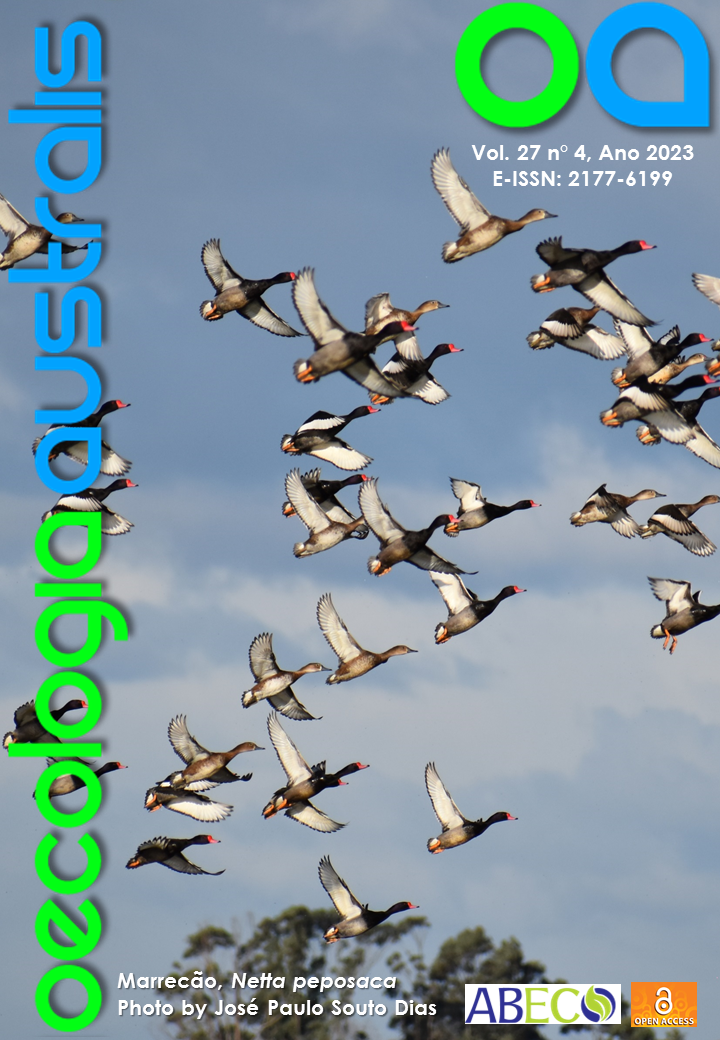STOMACH MORPHOLOGY AND FIRST RECORD OF THE FRESHWATER SHRIMP MACROBRACHIUM POTIUNA PREYING ON ADULT TREEFROG IN THE ATLANTIC FOREST
DOI:
https://doi.org/10.4257/oeco.2023.2704.05Palavras-chave:
Anatomy, Anurans, Arthropods, Atlantic ForestResumo
We present the first report of Macrobrachium potiuna (Arthropoda: Decapoda) preying on an
juvenile anuran, alongside with a description of the stomach morphology of the shrimp individual. The
freshwater shrimp was observed feeding on a juvenile hylid in the Atlantic Forest. We interpret the shrimp’s
behavior as opportunistic predation instead of necrophagy due to the small size of the treefrog and the
absence of decomposition. We also briefly discuss some ecological theories that might be used to explain
this trophic relationship. Shrimp dissection revealed no gastric mill or other maceration structures, but
the stomach contents included dendrites and tissues of the prey, as well as two insect eggs from the order
Diptera. Our findings contribute to the limited knowledge on the diet, anatomy, and trophic relationships
of freshwater shrimps.


